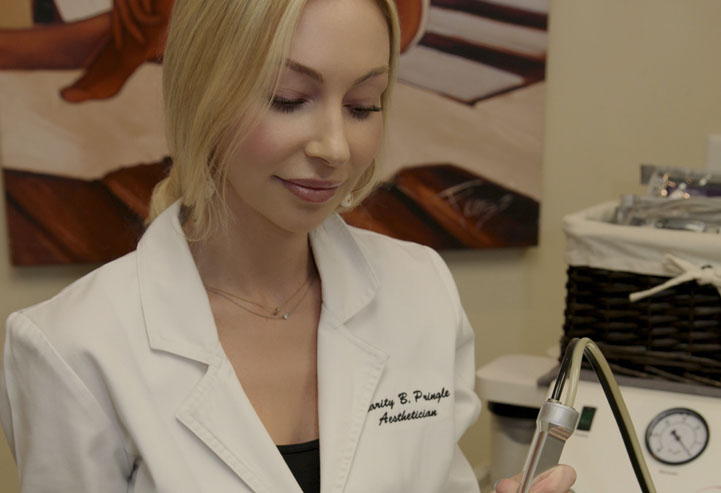Autumn Leaves Can’t Shield You from the Sun – Fall Sun Care Tips

As summer draws to an end, we might be tempted to stop slathering on sunscreen as aggressively as we did only a month ago. But while the temperatures aren’t as high as they were during the dog days of summer, the UVA and UVB rays are every bit as potent – and as dangerous.
Sun damage can cause a wide variety of cosmetic and medical issues in any season. Not only does sun exposure accelerate aging and lead to sunspots, but it also raises your risk of carcinomas and dangerous melanomas. Here are a few tips for integrating sun protection into your fall routine.
Use Thicker Sunscreen
It seems counterintuitive, but you might need more – not less – sun protection during the fall and winter.
The humidity decreases as the weather cools down, leaving skin drier and more vulnerable to sun damage. Your light, oil-free summer sunscreen might not offer the same level of protection during cooler months. Boosting the hydration in your sun care products helps protect the skin barrier and keep your skin moisturized longer in the dryer climate. A great product is our own WestDerm Antioxidant Moisturizing Sunscreen with hyaluronic acid.
Don’t Forget to Protect Your Lips
Even if you wear sunscreen religiously, it’s easy to forget that our lips need sun protection, too. Every year, roughly 40,000 lip cancer cases are diagnosed, making up about .6% of all cancer diagnoses in the U.S.
Make sure you apply a lip balm with sun protection after you apply your sunscreen, and make sure you carry lip balm with you throughout your day so you can reapply it after you eat or drink. If you want to plump up your pout, WestDerm Plumping Lip Treatment with SPF 30 is an excellent option, offering hydrating ceramides that encourage moisture retention while protecting the skin barrier from environmental aggravators.
Incorporate UPF Clothing into Your Wardrobe
When the weather is hot, wearing long sleeves and long pants outdoors is just flat-out uncomfortable. But the lack of UV-absorbing clothing means you must repeatedly apply sunscreen on your exposed limbs. Sun protective clothing, labeled as UPF (Ultraviolet Protection Factor), is a convenient sun shield that you don’t have to reapply – you just put it on and forget it.
When selecting your sun protective clothing, make sure the fabric is tightly knit and can either effectively absorb UV rays or reflect them. Natural cotton materials are effective absorbers of UV rays, while shiny polyester materials can reflect UV rays away from the skin.
It’s also important to find clothing that fits somewhat loosely, because tight clothing might stretch the fibers and lower the effectiveness. If you want to take the guesswork out of choosing sun-protective clothing, look for a tag that gives you the UPF rating.
The UPF rating of your clothing matters. A UPF 50 rating indicates that the fabric shields you from approximately 98 percent of ultraviolet rays. But what’s the difference between UPF and the SPF on sunscreen?
UPF Vs. SPF
UPF differs from the SPF (Sun Protection Factor) rating on liquid sunscreens because SPF measures the amount of solar energy the product can effectively block before the skin begins to burn. For example, if you tend to burn after spending 15 minutes in direct noon sunlight, a sunscreen of SPF of 30 indicates that you can multiply that time by a factor of 30 before your skin starts to react.
However, it is critically important to note that solar energy changes throughout the day, and the amount of solar energy differs in different environments. So, noontime sun at sea level with slight cloud cover will expose you to less solar energy intensity than noontime sun at a high altitude with no cloud cover.
Also, be on the lookout for broad-spectrum sunscreen. Unless your sunscreen is labeled “broad spectrum,” it will only offer protection against UVB rays, not UVA rays. While UVB rays cause sunburn and skin cancer, UVA rays can cause sun damage and premature aging.
If you want to make sure your skin stays healthy year-round, make sure to have your skin checked regularly by an experienced dermatologist. Please visit our information page to find a clinic near you.





